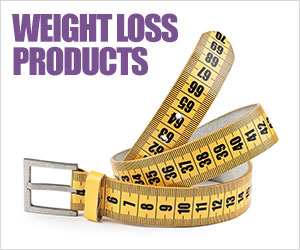How to keep an Exercise Diary

Successful
long term weight loss and improved fitness for most of us is about making
small and progressive changes to our daily exercise and
eating habits.
To help us make and keep track of those changes, keeping
a simple exercise
diary can
be a great help.
This article discusses why it's a good idea to keep
an exercise diary, what to record, some possible formats
and provides some examples of exercise diary entries.
Why keep an Exercise Diary
Do you remember exactly what and how much exercise you
did on Monday of last week and how many kilojoules or calories you burned
doing it?
Or do you remember exactly how far and how quickly you walked last month?
If the answer is no, then you could benefit from keeping
an exercise diary to plan and track your exercise
and fitness progress.
Even if the answer is yes, you too could benefit from
keeping an exercise diary because exercising for the same length of time
and intensity is likely only to help you maintain your status quo, not
help you lose weight and become fitter and stronger.
Here are some of the great things an exercise diary can help us do:
- Clarify and focus our exercise and fitness goals
- Break down our goals into manageable chunks
- Plan future activity and exercise patterns
- Record our actual activity and progress
- Record other important "peripheral information"
- Keep track of our progress towards our goals
- Better understand and manage our exercise habits
- Schedule and monitor exercise rest days
- Take guess work out of the fitness and weight loss equation
- See how balanced our exercise routine and lives are
- Stay motivated
- Overcome the hidden barriers to our weight loss success
- Understand the relationship between our exercise habits, lifestyle habits and weight loss
- Help prevent us from over-exercising
- Understand our sleeping patterns
- Help us prevent and manage injuries
- Provide a hard record of our successes
Things to record in an exercise diary
One of the reasons more people don't currently keep an exercise diary
is because they think it needs to be complicated and time consuming to
be effective.
Nothing could be further from the truth.
Keeping an exercise diary should be simple and shouldn't take up
a lot of our valuable time.
Like most things weight loss related, starting off slowly and as simply
as possible and progressing gradually is the key to successfully starting
to keep an exercise diary.
A good starting diary might record:
- The date and time we exercised
- What exercises we did
- How much time we spent exercising
- The intensity of our exercise - measured in terms of our heart rate for aerobic exercise or the weight we used and the number of sets and reps we performed during weight training
- What distance we covered while walking, jogging, cycling or swimming
- Approximately how much energy we burned exercising
Later on, we can also start to record things like:
- The amount and quality of sleep we get
- Our daily energy levels
- Our daily emotions
None of the above need be complicated.
As you'll see in the examples below, all we need to do
is record exactly what we do and when.
Simply knowing that we've only walked for 60 minutes
once this week tells us a great deal about what we need to do next week
and the week after that.
Likewise, knowing that we walked for 25 minutes each
day last week or that we did three sets of 15 dumbell curls
with 3lb dumbells will help us to plan
walking for 26 minutes a day
or do three sets of 15 dumbell curls with 5lb dumbells next week.
Exercise Diary formats
Keeping in mind that our exercise diary doesn't need
to be complicated to be effective, but can be as sophisticated as we would
like it, we can use any of the following to record our daily exercise
information in:
- A simple Exercise Book
- Any form of Diary
- A scrapbook
- Any loose leaf folder or file
- An Excel Spreadsheet
- An online diary, forum or blog
- A specially designed computer program diary
Completing the Exercise Diaries on this website
We offer two free exercise diaries for you to download
on this website, the Basic
Daily Exercise Diary and a Monthly
Aerobics Exercise Diary. Below are instructions or guidelines
to complete each.
Basic Daily Exercise Diary
This diary allows you to track your daily aerobic activities, your weight
training workouts and other important information like how much sleep
you got the previous night.
Let’s have a look at each of the fields within this diary and what
information is intended for each.
Day and Date Fields:
Clearly these fields are to record the day and date of each workout.
Aerobics Activity Table:
Activity - this is where you write down what sort of aerobic activity
you did, for example, walking, jogging, cycling, swimming, etc.
Time - this is where you record the time you began exercising,
e.g. 6.30am.
Duration - this is where you record how much time you spent exercising,
e.g. 90 minutes.
Distance - this is where you record the distance you traveled (if
relevant) during your workout, e.g. 5kms (walking), 20kms (cycling) or
20 laps (swimming)
Target Heart Rate - this is where you record your target
heart rate, e.g. 110 to 135bpm (beats per minute). To calculate your ideal
target heart rate, visit our target
heart rate calculator. For
more information on target heart rates in general and using a heart rate
monitor, see our article on using a
heart rate monitor.
Time in Zone - this is where you record the amount of time you
spent within your target heart rate while exercising, for example 45 minutes.
Even a basic heart rate monitor should provide you with this information.
Average Heart Rate - this is where you record your average heart
rate while exercising (which may include your warm-up and cool-down),
for example 120bpm.
Energy Burned - this is where you record the approximate
amount of calories or kilojoules you burned during your workout, e.g.
500 calories or 2,000 kilojoules. To help you estimate the amount of energy
you burn at your current body weight for a range of different exercises,
please visit our Exercise
Energy Charts.
Weight Training Activity Table:
Exercise - this is where you record the specific exercise
you performed, e.g. shoulder press. For a range of great exercises, please
visit our home workouts page.
Set Wgt - this is where you record the weight you used when performing
each exercise, for example 5kgs or 10lbs (dumbells). There is enough room
within the diary to record up to 6 sets of a single exercise.
Set Reps - this is where you record the number of repetitions you
performed for each exercise, e.g. 15 reps.
Other information table:
Hours Slept - this is where you record how much sleep you got the
previous night, e.g. 8 hours.
Appetite - this is where you record whether your appetite that
day is good (G), average (A) or poor (P) simply by circling the relevant
choice.
Mood - this is where you record whether your mood that day is good
(G), average (A) or poor (P) simply by circling the relevant choice.
Energy - this is where you record whether your energy level that
day is good (G), average (A) or poor (P) simply by circling the relevant
choice.
Motivation - this is where you record whether your exercise motivation
that day is good (G), average (A) or poor (P) simply by circling the relevant
choice.
Body weight - this is where you record your body weight that day,
e.g. 75kgs.
Monthly Aerobics Exercise Diary
This diary allows you to track your monthly aerobic activities and other
important information.
Let’s have a look at each of the fields within this diary and what
information is intended for each.
Month and Year Fields:
Clearly these fields are to record the month and year in which your workouts
take place.
Aerobics Activity Table:
Date - this is where you fill in the day’s date.
Activity - this is where you write down what sort of aerobic activity
you did, for example, walking, jogging, cycling, swimming, etc.
Time - this is where you record the time you began exercising,
e.g. 6.30am.
Duration - this is where you record how much time you spent exercising,
e.g. 90 minutes.
Distance - this is where you record the distance you traveled (if
relevant) during your workout, e.g. 5kms (walking), 20kms (cycling) or
20 laps (swimming)
Target Heart Rate - this is where you record your target
heart rate, e.g. 110 to 135bpm (beats per minute). To calculate your ideal
target heart rate, visit our target
heart rate calculator. For
more information on target heart rates in general and using a heart rate
monitor, see our article on using a
heart rate monitor.
Time in Zone - this is where you record the amount of time you
spent within your target heart rate while exercising, for example 45 minutes.
Even a basic heart rate monitor should provide you with this information.
Average Heart Rate - this is where you record your average heart
rate while exercising (which may include your warm-up and cool-down),
for example 120bpm.
Energy Burned - this is where you record the approximate
amount of calories or kilojoules you burned during your workout, e.g.
500 calories or 2,000 kilojoules. To help you estimate the amount of energy
you burn at your current body weight for a range of different exercises,
please visit our Exercise
Energy Charts.
Conclusion
Successful long term weight loss for most of us is about making small
and progressive changes to our daily habits, particularly with regard
to the level and intensity of our physical activity and the amount and
types of food we eat.
To help us plan and keep track of those small changes,
keeping a simple exercise diary can be a great help.
This article discussed why it's a good idea to keep an
exercise diary, what things are useful to record in one, some possible
formats for them and provided some instructions on how to fill out the
diaries that available free to download from this website.
An exercise diary can be started on any day of the year
so why not start one today?
Good luck and thanks for visiting weightloss.com.au.
© Copyright Ultimate Weightloss.
This article was written by Scott Haywood.
Scott is the editor of weightloss.com.au. Scott has developed an expertise in fitness and nutrition, and their roles in weight loss, which led him to launch weightloss.com.au in 2005. Today, weightloss.com.au provides weight loss and fitness information, including hundreds of healthy recipes, weight loss tools and tips, articles, and more, to millions of people around the world, helping them to lead happier, healthier, lives.
You can follow Scott on Google+ for more interesting articles.





















